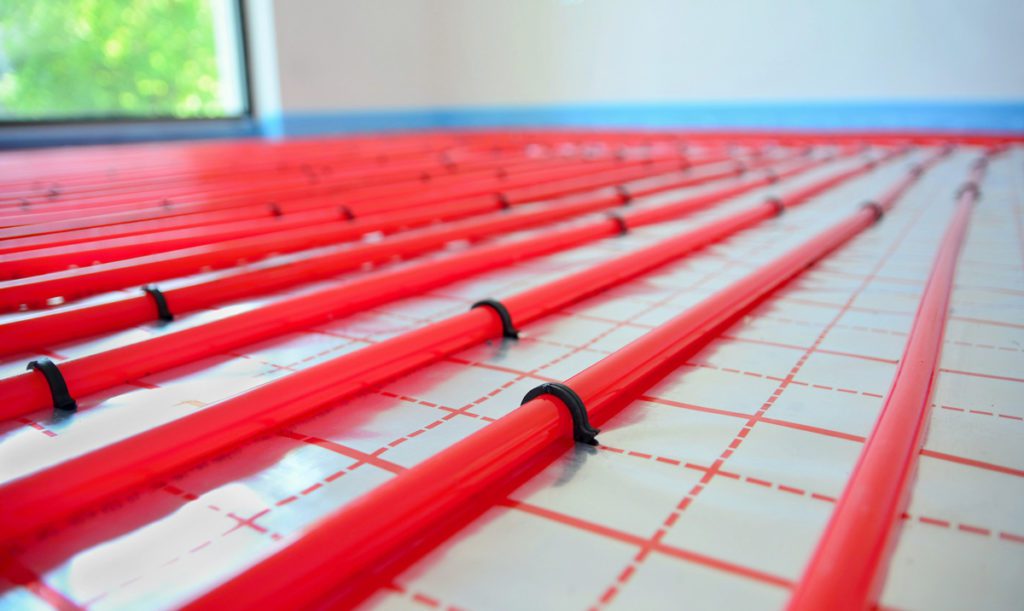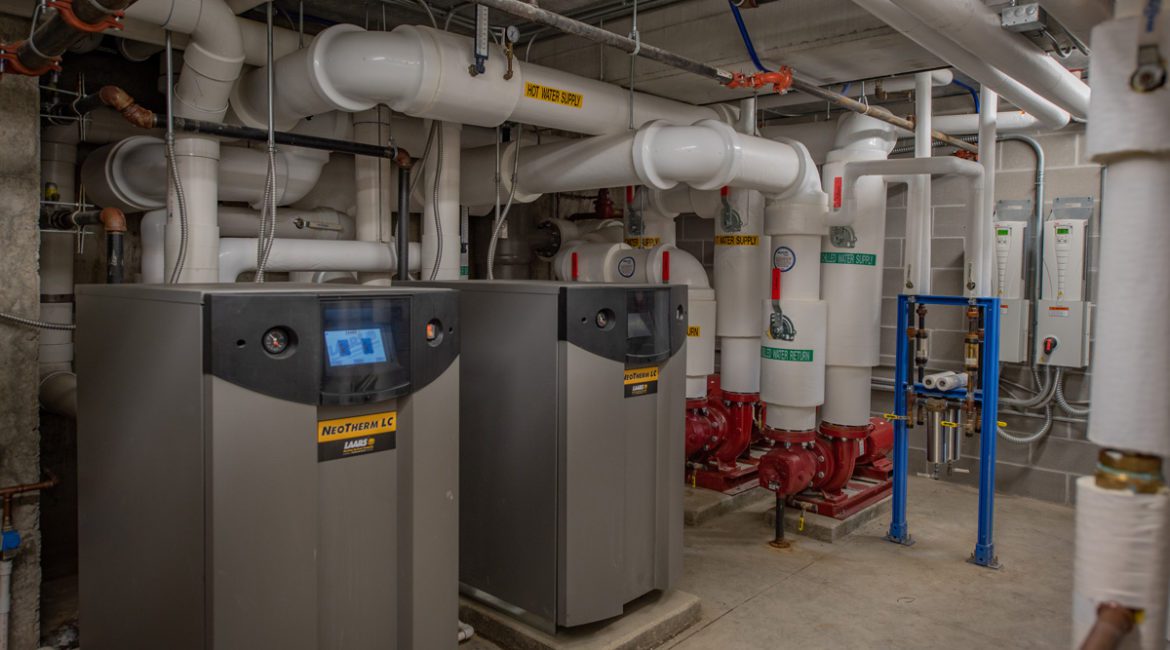When you think of indoor climate control, forced air through ductwork may be the first method that comes to mind. While this popular type of air conditioning has its advantages, hydronics should be part of the conversation when deciding how to heat and cool your commercial building.
As its name suggests, hydronics uses water flowing through pipes to condition the air. It’s a method that has been around for over a century, first appearing in the form of the classic cast-iron radiator units still in use in many Victorian-era homes. Over the decades hydronics has evolved, enjoying a resurgence in popularity in recent years.
Keep reading to learn about different types of hydronic systems and how they can benefit your commercial building or project.
Types of Hydronic Systems
The two synergistic components for heating water in hydronic systems are the boiler and the indirect water heater. A boiler supplies heat to the heating units, as well as hot water to plumbing fixtures, by using an indirect water heater. An indirect water heater is a tank that does not use electricity, instead heating water through the same coils used by the boiler. The water used for plumbing is stored in a separate tank.
Systems equipped for cooling also come with a chiller. Some of these systems have three pipes: one for delivering hot water, another for delivering cold, and one common return pipe. Other systems have four pipes, so the hot water and cold water can be returned separately. This four-pipe system is the most energy efficient, as less energy is required for re-heating or re-chilling the water before cycling it back through.
Radiant Floor
One of the more recent developments in hydronics is the space-saving radiant floor heating system. Since heat rises, putting the heating system in the floor is logical. Heated water flows through PEX tubes under the floor’s surface for an even heat distribution, and returns to the boiler via a pump.
This method is an excellent choice for new construction, as it’s relatively easy to install in the early stages of building. If your business is planning for a major remodeling project, this is a good time to explore the inclusion of radiant floor heating. Radiant heating is also available in panels for walls and ceilings.

Baseboard
Baseboard heating, which was introduced in the 1920s and became ubiquitous in the 1960s in its electric form, is available as a hydronic system. Baseboard units are generally placed along exterior walls, and so named because they take the place of baseboard woodwork that would have stretched along the base of the walls previously.
Because hydronics continuously cycles the same water through the system, this type of baseboard heating is less wasteful than electric, and therefore especially beneficial in case furniture or other fixtures are placed directly in front of the baseboard. With the electric convector style, once the heated air is directed out into the space, air must be drawn back in to be reheated. In the more energy-efficient hydronic baseboard, the recirculating water contained within radiates heat into the area.
Cast Iron
Cast iron is slowly but surely making a comeback, as it was a reliable method of delivering radiant heat in the late 19th and early 20th centuries. The original cast iron radiators have all but disappeared from even the most venerable commercial buildings, having been replaced by the innovative baseboard heaters of the 1950s and ’60s. As the beneficial qualities of hydronics are rediscovered, so is the timelessness of these classic stalwarts.
Although they are bulkier and take up a larger concentration of space than their baseboard counterparts, cast iron radiator units contribute a touch of style and old-fashioned charm, and have the advantage of not being blocked by furnishings arranged along the wall.
Benefits of Hydronic Systems
Hydronic heating and cooling systems are gaining wider acceptance as more business owners are learning of their many benefits. Because the water contained inside hydronic heating units is continuously recycled through the system, this type of heating directly impacts building occupants in many positive ways. Regardless of the type of hydronic system in place, there are advantages to heating or cooling with this method:
- Energy efficiency – fewer emissions and lower energy bills
- Even heat distribution – no need to close rooms off to keep heat in
- Quiet operation – no furnace blowing air through ductwork
- Cleaner indoor air – the heat-conducting medium is fully contained inside pipes
- Versatile – compatible with all fuel sources
Hydronics vs. Plumbing
While hydronics and plumbing both involve water flowing through pipes, the disciplines are distinctly different. At Custom Aire, we have certified experts in each service.
Our commercial plumbing professionals provide high-quality, energy-efficient traditional plumbing solutions for projects such as hotels, office buildings, hospitals, and multi-family housing. Among the types of plumbing we specialize in are bathroom fixtures, pipes and drains, and water heaters.
Our commercial hydronics experts are certified in all manner of hydronic climate control, from installation to maintenance, and are well-versed in the variety of hydronic products available.

As with all our HVAC installations, we coordinate with other building trades when designing and installing any hydronic or plumbing system during new construction or major remodeling.
When you’re exploring the various options for heating and cooling, hydronic systems are well worth considering. Contact us today to learn more about how hydronics from Custom Aire can enhance the comfort of your commercial space.





